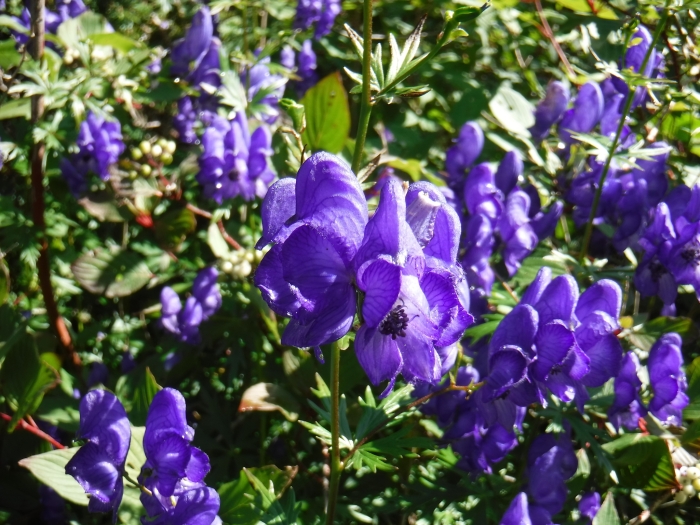Sparks Variety Monkshood
(Aconitum henryi)
Sparks Variety Monkshood (Aconitum henryi)
/
/

© Peggy Schaeffer
CC BY 4.0
Image By:
© Peggy Schaeffer
Recorded By:
Copyright:
CC BY 4.0
Copyright Notice:
Photo by: © Peggy Schaeffer | License Type: CC BY 4.0 | License URL: http://creativecommons.org/licenses/by/4.0/ | Uploader: heypeggy | Publisher: iNaturalist |





















Estimated Native Range
Summary
Aconitum henryi, commonly known as Sparks variety monkshood, is a spindly, erect perennial herb that originates from rhizomes. It is native to the mountainous regions of China, specifically in the provinces of Gansu, Henan, Hubei, Hunan, Shaanxi, Shanxi, Sichuan, and Zhejiang, where it thrives in the understory of moist forests and along stream banks in alpine and subalpine zones at elevations of 3281-10171 feet. This monkshood can grow up to 5 feet tall and is known for its glossy dark green divided leaves and its striking blue or deep violet-blue flowers that bloom in September and October, adding late-season color to the garden.
The plant’s flowers are showy and hood-shaped, making it a popular choice for ornamental use in shaded garden areas, woodland gardens, and borders. It requires consistently moist soil and part shade to full shade conditions, mimicking its native habitat. While it is appreciated for its aesthetic appeal, gardeners must handle Aconitum henryi with care, as all parts of the plant contain toxic alkaloids that can be harmful if ingested or absorbed through the skin. It is generally low-maintenance but should be planted with caution in areas accessible to children and pets.CC BY-SA 4.0
The plant’s flowers are showy and hood-shaped, making it a popular choice for ornamental use in shaded garden areas, woodland gardens, and borders. It requires consistently moist soil and part shade to full shade conditions, mimicking its native habitat. While it is appreciated for its aesthetic appeal, gardeners must handle Aconitum henryi with care, as all parts of the plant contain toxic alkaloids that can be harmful if ingested or absorbed through the skin. It is generally low-maintenance but should be planted with caution in areas accessible to children and pets.CC BY-SA 4.0
Plant Description
- Plant Type: Herb
- Height: 4-6 feet
- Width: 1.5-2 feet
- Growth Rate: Moderate
- Flower Color: Blue, Purple
- Flowering Season: Summer, Fall
- Leaf Retention: Deciduous
Growth Requirements
- Sun: Part Shade
- Water: Medium
- Drainage: Medium, Fast
Common Uses
Border Plant, Deer Resistant, Potted Plant
Natural Habitat
Native to the understory of moist forests and along stream banks in alpine and subalpine zones
Other Names
Common Names: Sparks Variety
Scientific Names: , Aconitum henryi, Aconitum henryi var. compositum, Aconitum henryi var. henryi, Aconitum henryi var. pilocarpum, Aconitum liouii, Aconitum shensiense, Aconitum sungpanense, Aconitum sungpanense var. leucanthum,
GBIF Accepted Name: